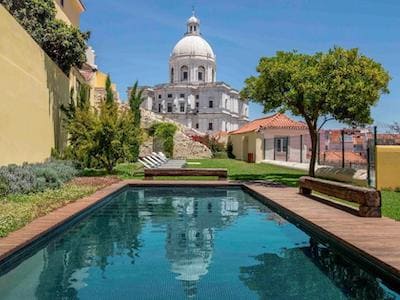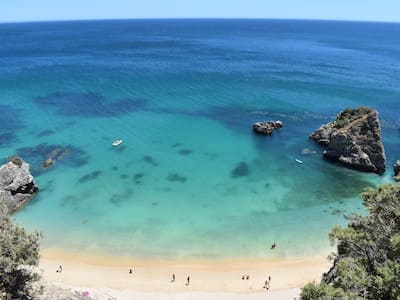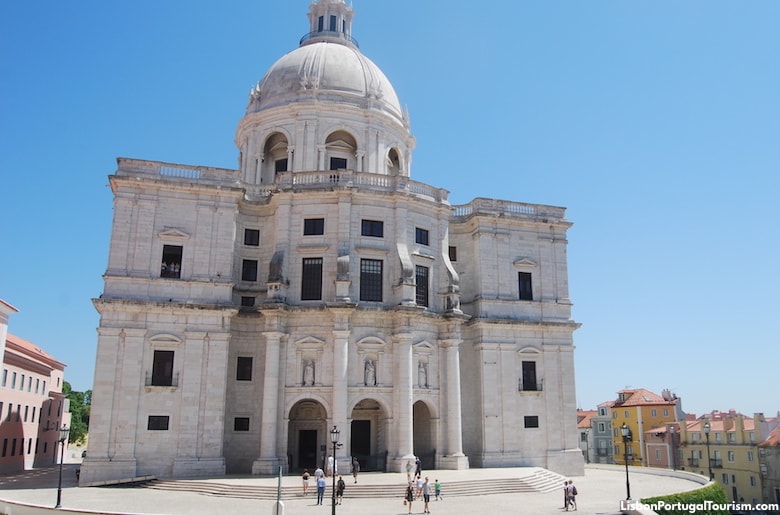
The Church of St. Engratia, the National Pantheon
It was the Church of Saint Engratia when it was built in 1682, but became the National Pantheon in 1916. Its large dome was only completed in 1966, making it the monument that took the longest to complete in all of Portugal. There’s even an expression in the country for something that takes forever -- “a job like St. Engratia.”
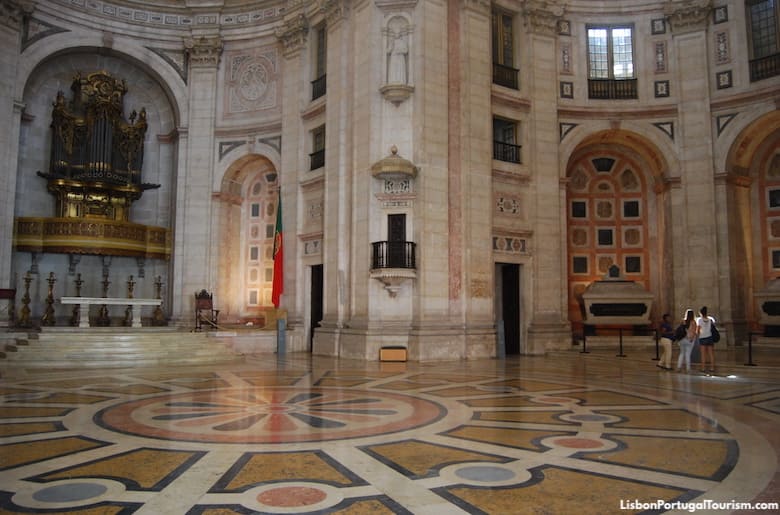
The marble interior of the National Pantheon
It’s said that its construction took forever because it stands on the site of a previous church that was desecrated by a robbery in 1630. A Jew was blamed and executed, only to be exonerated later. Before dying, he said that a new church would never be completed, due to the conviction of an innocent man. He seemed to have prophesied, when the new church collapsed during the first months of construction in 1681 (the cause was the effect of a storm on a poorly-built foundation).
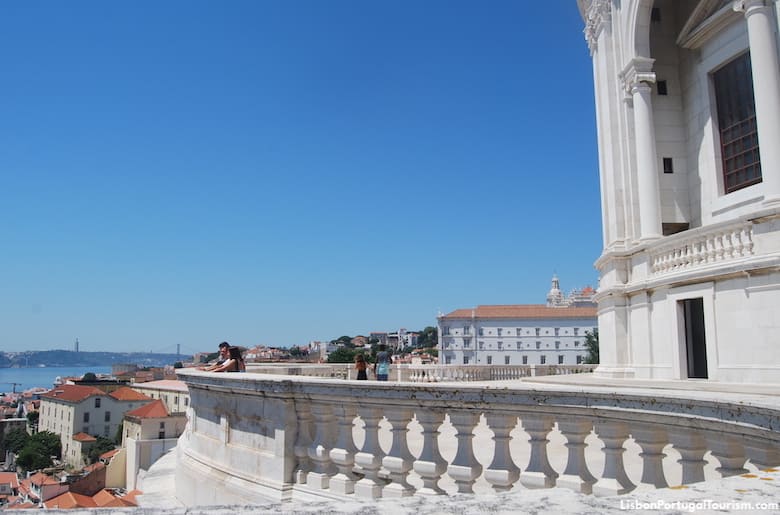
The terrace by the dome of the National Pantheon
It’s considered Portugal’s first baroque monument, but it lacks all the golden ornamentation and blue-and-white tile panels, so typical of Portuguese baroque. Instead, its interior is inspired by St. Peter’s Basilica in Rome, and made up of colored marble.
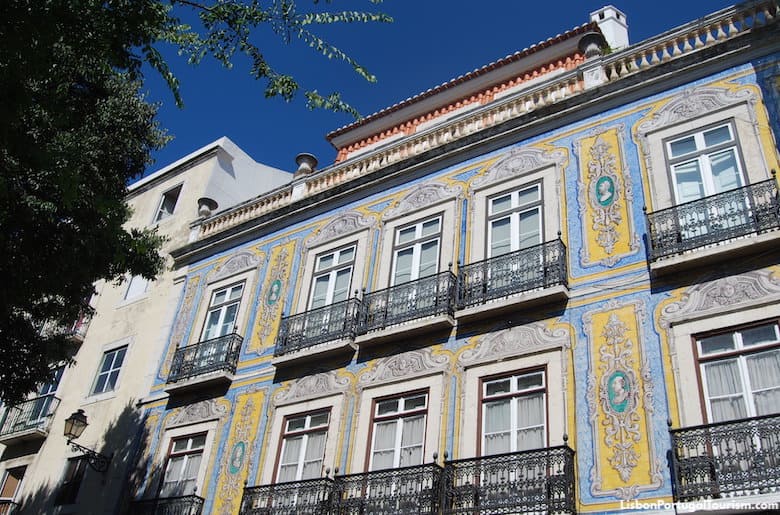
One of Lisbon's most beautiful tiled buildings can be seen by the National Pantheon
Built on an octagonal floor plan centered on a Greek cross, it holds the tombs and cenotaphs of the country’s most important or famous cultural figures, like explorers, presidents, poets, and even Fado diva Amália Rodrigues.
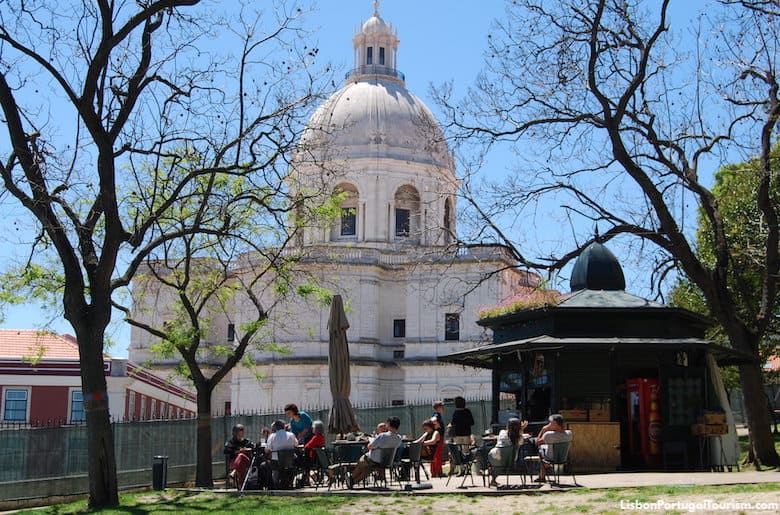
The Botto Machado Garden and its kiosk café face the National Pantheon
The main reason for a visit, however, is the large terrace by the dome, which offers a view over Alfama and the river. Try visiting on a Saturday or Tuesday morning, when the city’s flea market takes place in the shadow of the monument.
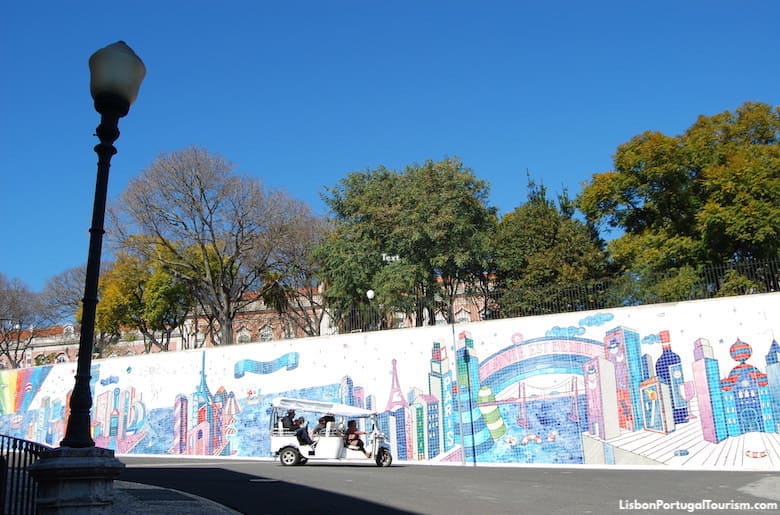
Tile mural by artist André Saraiva (aka Mr. A) below the Botto Machado Garden
At the flea market site, notice one of Lisbon’s most beautiful tiled buildings, which is now a hotel (see below). The blue, yellow and white tiles date from 1860, and were created in the romantic style of the time, inspired by Baroque architecture.
End your visit with a break at the Botto Machado Garden, which faces the pantheon and has a kiosk serving refreshments.
How to Get to the National Pantheon
The National Pantheon is a short walk from one of the stops of tram 28. That stop is "Voz do Operário," which is across the street from the Monastery of St. Vincent. Take the street next to the monastery, past the arch (“Arco Grande de Cima”), and you’ll reach Campo de Santana, where the flea market takes place and where you see the Pantheon.
You may ride the tram for free with the Lisboa Card.
Campo de Santa Clara, Alfama
www.panteaonacional.gov.pt
Admission and Tickets to the National Pantheon
Admission is €8 and you may buy your ticket online: National Pantheon Tickets
It's free with the Lisboa Card.
It's closed on Mondays
Attractions Nearby
A few feet from the National Pantheon is the Monastery of São Vicente de Fora, which offers the best view of the pantheon from its rooftop. If it’s a Tuesday or Saturday, you may also catch the flea market, which is held by the pantheon.
Where to Stay by the National Pantheon
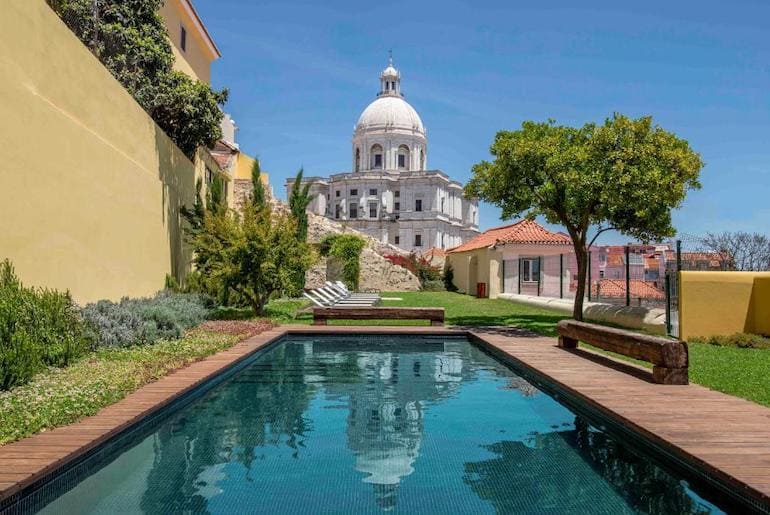
Located in one of Alfama’s most picturesque streets, this property is divided into studios and 1- and 2-bedroom apartments. All guests can relax at the landscaped terrace, where there’s a pool and a view of the dome of the National Pantheon. The fitness room is also open to all. It doesn’t have a restaurant, but all units are equipped with a kitchenette and there are many restaurants nearby. Next door is one of the best spots to listen to fado music in Lisbon, in a former chapel preserving beautiful tile panels.
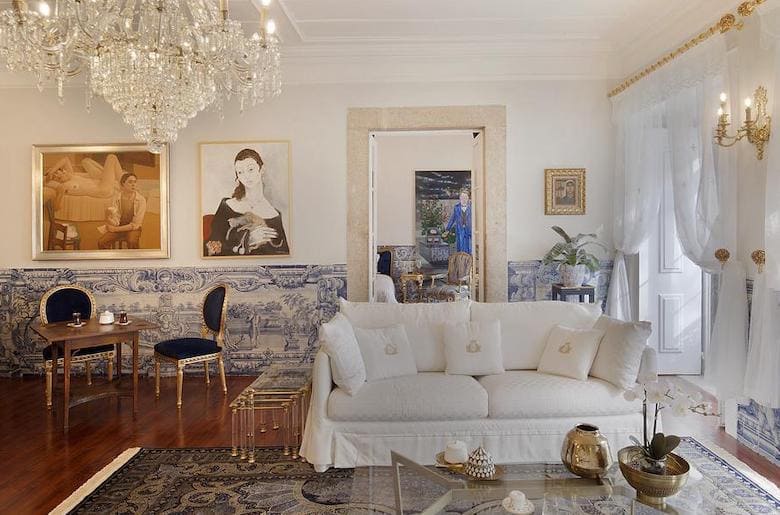
Casa dell’Arte Club House
By the pantheon you’ll see one of Lisbon’s most beautiful tiled façades, designed in 1860 in the Romantic style, with images of busts creating the illusion of marble. Once an aristocratic residence, it’s now one of Lisbon’s most romantic hotels, with more tile panels throughout the interior. Each suite has an elegant, classic décor, and windows opening to views of the National Pantheon and the Monastery of St. Vincent. It’s also something of an art gallery, with paintings, sculptures and other pieces collected by the owner in different parts of the world.

